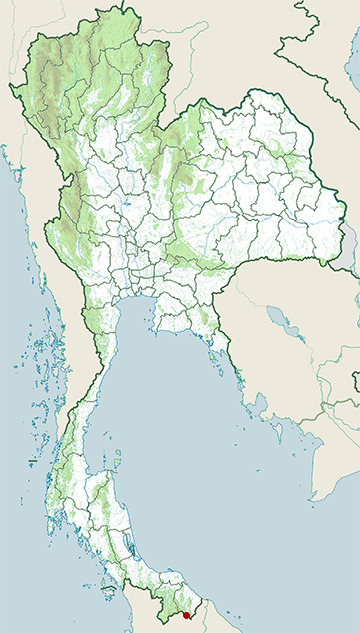Species of Thailand
Malayan spotted-winged fruit bat
Balionycteris seimundi
Cecil Boden Kloss, 1921
Balionycteris seimundi is a species of megabat found in Malaysia.
Taxonomy
Balionycteris seimundi was described in 1921 by C. Boden Kloss. He noted it as a subspecies of spotted-winged fruit bat, with a scientific name of Balionycteris maculata seimundi. The holotype had been collected by Eibert Seimund, who became the epithet for the name seimundi. Seimmund had collected the holotype in Pahang, Malaysia. Later genetic studies showed that there was a larger-than-expected genetic distance of 12% between B. m. seimundi and B. m. maculata, which was used to justify its elevation to a full species.
Description
Balionycteris seimundi is a small megabat, weighing only 10-15 g. It has a forearm length of 40-45 mm. Its fur is blackish brown on its back and somewhat paler on its underside.
Range and habitat
Balionycteris seimundi is widely distributed in Peninsular Malaysia. Its range likely includes other countries in Southeast Asia, including Thailand and Indonesia (Sumatra and the Riau Archipelago). They roost in small groups in palm trees, termite nests, epiphytic ferns, and, occasionally, caves. Its habitat includes lowland rainforests at elevations from sea level to 1500 m above sea level.
This article uses material from Wikipedia released under the Creative Commons Attribution-Share-Alike Licence 3.0. Eventual photos shown in this page may or may not be from Wikipedia, please see the license details for photos in photo by-lines.
Scientific classification
- Kingdom
- Animalia
- Phylum
- Chordata
- Class
- Mammalia
- Order
- Chiroptera
- Family
- Pteropodidae
- Genus
- Balionycteris
- Species
- Balionycteris seimundi
Conservation status

Least Concern (IUCN3.1)
Photos

Range Map

- Hala-Bala Wildlife Sanctuary